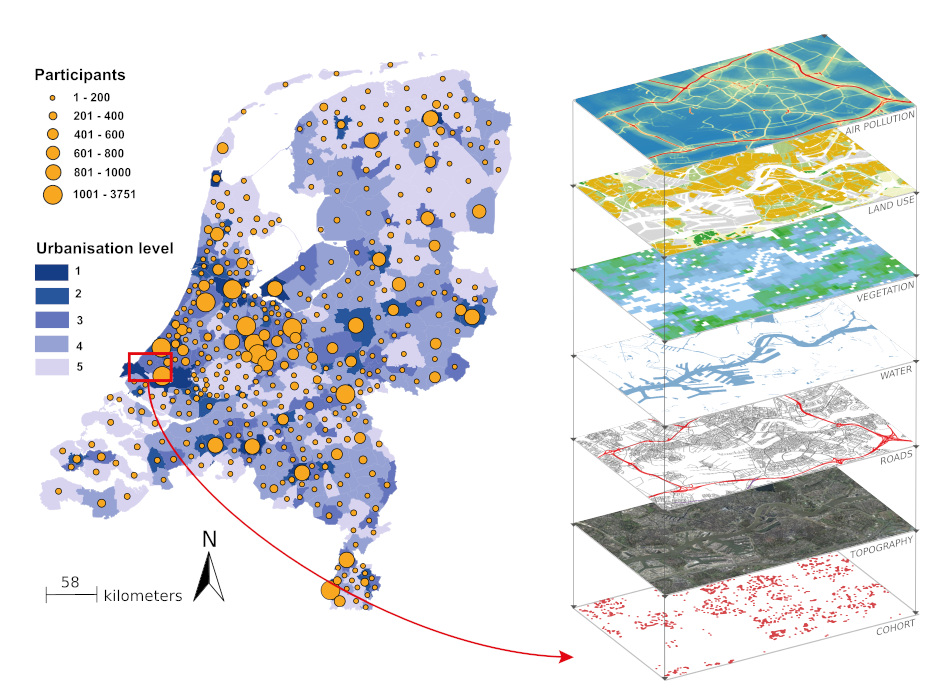A collaboration between researchers from the Institute for Risk Assessment Sciences, the Netherlands Cancer Institute, Julius Center, National Institute for Public Health and the Environment, Netherlands Institute for Health Services Research.
The prospective LIFEWORK cohort was established to collect a large amount of high quality data on occupational and environmental exposures using a harmonized core questionnaire. The study focuses on the impact of physical, biological and chemical exposures in our daily living environment: at home and at work.
We aim to determine whether diseases and symptoms occur more often or less often among people who have had certain environmental or occupational exposures compared to people who have had no or less exposure. To achieve a large study population, data collection was integrated into an already existing cohort (EPIC-NL, the European Prospective Investigation into Cancer and Nutrition in the Netherlands) and two de novo cohorts (the Nightingale Study and AMIGO, the Occupational and Environmental Health Cohort Study).
From the outset, the LIFEWORK cohort was designed as a federated study, whereby the subcohorts are governed by an overarching governance board alongside independent governance boards, and data collection was designed to capture a core set of exposures and outcomes of interest. In addition to the harmonized core data collected on exposures and health outcomes, each of these cohorts collected data to fulfill additional research aims.
Study population: In total 88466 participants were enrolled in LIFEWORK in 2011-2012. Participants had a median age of 51 years at baseline (range 19-87), and the majority are female (90%), with nurses being over-represented. Twenty-two percent of participants reported to have started using a mobile phone more than 10 years prior to baseline. Participants are distributed across the whole of the Netherlands. (figure 1)

Data collection takes place through questionnaires and linkages to morbidity and mortality registries and electronic medical records of GPs. A full list of topics included in the questionnaire can be found in this table. Information on historical occupations and residential addresses was collected to calculate life-time environmental and occupational exposures. These occupations and addresses are linked to various job-exposure matrices (JEMs) and geospatial exposure models.
Between 2015 and 2018 a follow-up questionnaire has been conducted to assess changes over time.






